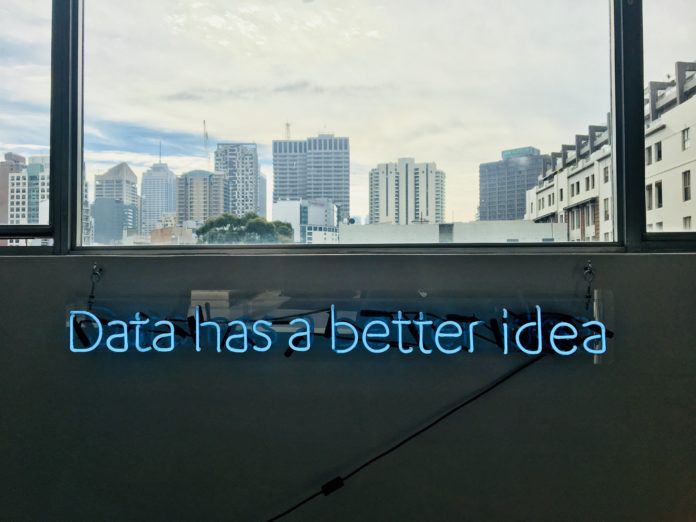Austin is a technological hub, a startup mecca, the best educated, fastest-growing large city in America, home to a world class university and brilliant companies. But we’ve been riding on these accolades too long. We haven’t positioned our city to perform well in the digitally-fueled future. COVID-19 took the years we thought we had to figure all of this out and reduced that to a number of days.
In addition to redefining our reality, the scourge is accelerating the conversation about the role of technology and government and the relationship between the two. As one scientist put it, our global charge is a race between the virus’ ever-mutating genes and humanity’s smarts: smart medicine, smart public health, smart public policy are our tools.
And so too are the tools of “smart cities.”
When it comes to smart cities – loosely defined as the Internet of Things, or IoT, applied to urban life – some are more prepared than others. In a non-pandemic scenario, a smart city arms leaders with data to make better decisions on how to keep municipalities safer, greener and easier to navigate. In our current situation, having the right data and using it can mean the difference between life and death.
So how do Austin’s efforts rank? Well it depends on the lens you’re looking through. Our innovation sector is making headlines. Austin super-star startup data.world leapt into action almost overnight to create the gold standard of COVID-19 data portals. The world’s largest collaborative data community is fueling real-time information for critical global decision making.
Now let’s shift to the government sector. At the start of this pandemic, it seemed city business as usual with misaligned messaging – Do we do pub crawls to support the local economy or not? Can construction projects move forward or not? The scurrying was understandable given all of the unknowns and the need for rapid response, but it signaled an all too-familiar feeling of frustration.
But then the City of Austin launched a chat bot enabled with artificial intelligence, or AI, to direct those who don’t want to navigate the tumble of pages mired with text and lists of links. Next, City Hall rolled out an algorithm-based COVID-19 assessment tool that intuitively helps people determine whether or not they need testing and then directs them appropriately. This is what a responsive, modern city government looks like and it’s looking good so far. And there is a lot more to do.
Radical times call for the new approaches no doubt being delivered by the skilled hand of Austin’s new Chief Technology Officer, or CTO, Tauseef Khan. Mr. Khan has his work cut out for him. There are years of inertia to overcome. But my hunch and my desperate hope is that everyone is ready for a new way.
Our best bet is to look to other tech-connected, and ‘future smart city’ communities that have been doing this for years.
A few from which we can learn:
- Columbus, Ohio: Can’t Stop Columbus started with a conversation on March 15. In a matter of weeks, it morphed into a movement of 1,000 volunteers and 40-plus partners. From a new platform to connect families hit by COVID-19 with free food providers to a network of therapists offering free counseling to first responders, Smart Columbus is fast moving in myriad ways. The initiative is brand new but in fact the result of years building partnerships between the city, industry, startups and community groups.
- Houston: Here, the city-supported Ion Accelerator is helping hospitals secure protective equipment for doctors and nurses while aiding businesses that need to reexamine and assure the safety of their supply chains. And these are just a few of the examples enabled by Houston’s quick pivot to support its COVID-19 response with what’s known as “The Ion Smart & Resilient Cities Accelerator and Prototyping Lab.”
- Aurora, Ill.: Civic leadership in this city is using data aggregation tools to both read and respond to the public’s needs. Tracking disinformation campaigns on social media and other sources means the right communication can be swift and specific. It also aids communication between departments so that valuable time isn’t lost in translation.
- Carlsbad, Calif.: Residents here can go to a city-run website, upload their address, and get a map of essential services available nearby.
- Chicago: The City of Chicago’s public health department is collaborating with Toronto-based BlueDot to use anonymous location information from cell phone apps, analyze this with AI tools and predict the spread of COVID-19 in the city.
- Singapore: Across the globe, Singapore – often named the Smartest City in the World – swiftly launched an app that enables users to monitor his or her own health closely for signs of flu-like symptoms. Users opt in voluntarily, no personal data is recorded and information is stored locally and encrypted on the user’s device. And that’s just one of the services the city-state makes available among a wide array of tools online.
So what can Austin do to become smarter, faster?
1 – Embrace a Smart City Vision:
The foundation of a smart city strategy is acknowledgement that it takes government working alongside industry, startups, academics, social sector advocates and residents. This collaboration gives way to a shared vision and set of values. Objectives, priorities and project plans follow. Only then does the conversation turn to technology implementation.
But Austin hasn’t reached that first step of fully embracing a cross-sector consortium to solve problems, even as its largest urban neighbors – San Antonio, Houston and Dallas – make major strides. To be fair, Austin had some early movement. In November of 2016 the Austin City Council passed a resolution calling for the development of a Smart City Strategic Roadmap. There were some updates in 2017 and 2018. Since then there has been some momentum with the local smart city consortium nonprofit, AustinCItyUP (soon to be rebranded). But these are small steps compared to the big potential that could be realized if there was a full-on commitment to move forward, better, together.
2 – Better leverage the private sector:
While technically a subset of the above recommendation, for Austin this deserves its own category. Austin has a deep-seated, long-standing grudge against the private sector. Companies large and small complain about how difficult it is to get even simple projects to the next step in Austin compared to other cities. Likewise, I’ve heard many city employees bemoan a corporate entity for “wanting to make money.” Sure, there are ethical boundaries to be respected. And cultural change is always hard for any institution. But a new culture of collaboration is urgently needed to ensure resources are adequately deployed to meet community needs.
Austin is not alone. Many cities are figuring this out. But 2020 and the years to follow will be defined by our ability to embrace new mindsets. My hope is that more cities, Austin included, realize that technology – and the companies that provide it – is not the devil. Another thing to consider is that the companies with the most to give – large global corporates – have to deploy in scale. Customizing an offering for each U.S. city doesn’t really work. However, through a respectful conversation, there is an opportunity to align needs and make sure everyone wins.
3 -Create a stronger digital agenda platform:
Putting connected, sensor-rich systems in place to gather the right information helps government respond with greater agility and communicate more accurately. These sensor networks can be thoughtfully designed by a mix of people who are smart enough to find the balance between a human and a technological approach.
A few weeks ago, back when we were all driving, one of Austin’s biggest challenges was traffic congestion. Even though this is widely acknowledged by the city’s highest office, we are still stuck in the analog retiming of a third of traffic signals every three years. The technology exists to enable real-time traffic flow and signal response so Austin has the ability to solve some of its greatest problems with smart technology. It just has to want to want it.
In other cities, like Adelaide, Australia, smart technology gets in front of water-related issues like detecting leaks or breaks and identifies which pipes need to be replaced first and fastest. Perhaps those sensors could be programmed to identify unwanted disease-related particles.
Choose any municipal issue – zoning, permitting, lighting, trash collection, blighted buildings, crime and public safety just to name a few – and there are hundreds of smart solutions. Sure it is more complicated than simply slapping some sensors on a problem – it requires crafting a careful citizen/resident-centric approach. There are many methods on how to do this. For some, take a look at the The Smart City Playbook.
4- Invest in digital infrastructure:
Overall, the Internet across the U.S. has stood up well given the influx of online users and activity. Austin’s network hasn’t fared so well. One new report just found that Austin is one of three U.S. cities suffering the erosion of broadband Internet speeds by more than 40 percent amid the COVID-19 crisis.
Most seriously this disconnects our elderly from care and shuts many of our school children out of online classrooms. Like many school districts across the country, the Austin Independent School District, AISD, has had to improvise, equipping school buses with Wi-Fi and rolling them out to disconnected neighborhoods. A quick wireless solution is admirable to get kids online. But it also highlights the imperative to close our digital divide. We can and we must do better.
The quickest question is always “who’s to blame.” I’ve witnessed a lot of finger pointing and frustration between the city and Internet infrastructure providers over the years, which is part of the reason we’ve arrived at this point. But it’s time to drop the accusations and replace lines on the battlefield with a concerted effort to work collaboratively. Other cities have shown that a public/private partnership approach works. It’s time to inspire better, more holistic, longer term thinking that works for all of Austin.
And so here we are. In the ideal future state of our city, government is user centric. Everyone has instant access to the information they need in a format that is easily accessible and actionable. We will be as wired as we are weird. We will be as connected as we are caring. We will be when we are all working together.
Putting collaborative systems in place mandates new models of not only doing business and transacting, but also governing. Cities all around the world are doing this and doing this well.
COVID-19 is rewriting the rules. There is a chance to respond and accelerate a community-centric urban technology agenda. But cities must be willing to participate in new conversations with new partners. They must show a willingness to embrace change, to invite new solutions in the face of the unknown. The era of data-enabled, agile government is here.
Now… how will Austin respond?
If you like what you’ve been reading, please click here to subscribe and we will send you updates and our newsletter.







Great article, just what I was looking for.
My partner and so i stumbled over here from a different website and thought I might check things out. I love things i see so now i am just following you. Anticipate thinking about your online page yet again.
I need to to many thanks for this excellent read!! I certainly enjoyed every bit of it. I have got you saved being a favorite to think about new stuff you post…
Hey I am so grateful I found your web site, I really found you by accident, while I was searching on Askjeeve for something else, Anyhow I am here now and would just like to say many thanks for a remarkable post and a all round thrilling blog (I also love the theme/design), I don’t have time to go through it all at the minute but I have saved it and also included your RSS feeds, so when I have time I will be back to read much more, Please do keep up the excellent jo.
Greetings I am so excited I found your blog page, I really found you by mistake, while I was looking on Yahoo for something else, Anyhow I am here now and would just like to say thank you for a remarkable post and a all round entertaining blog (I also love the theme/design), I don’t have time to read it all at the minute but I have book-marked it and also added in your RSS feeds, so when I have time I will be back to read much more, Please do keep up the fantastic work.
Hurrah! Finally I got a web site where I be effective at really
obtain helpful facts concerning my study and knowledge.
Having read this I thought it was really informative. I appreciate you spending some time and effort to put this informative article together. I once again find myself spending a significant amount of time both reading and posting comments. But so what, it was still worth it!
It’s hard to find well-informed people on this topic, but you seem like you know what you’re talking about! Thanks
You need to take part in a contest for one of the best websites on the net. I most certainly will recommend this website!